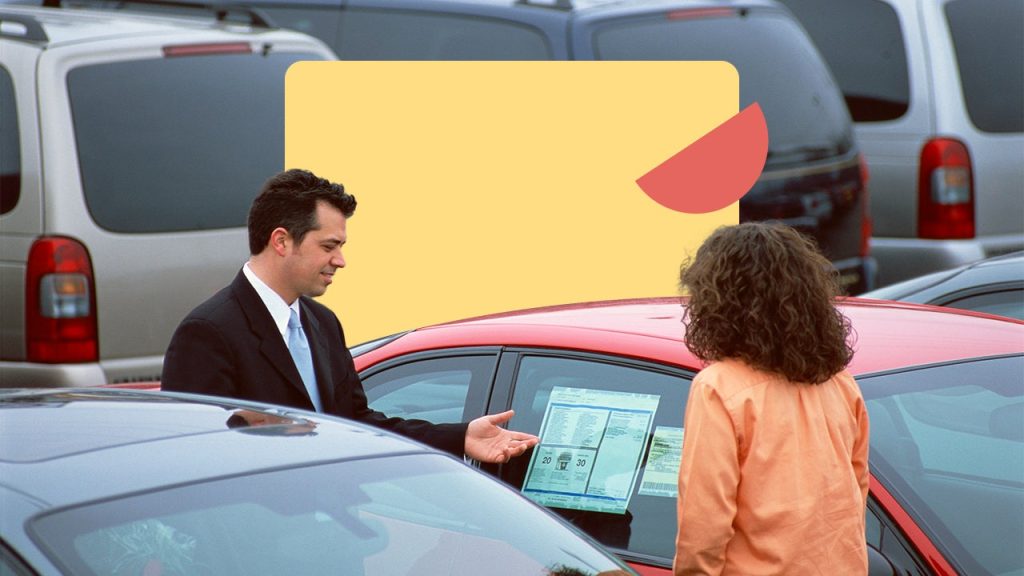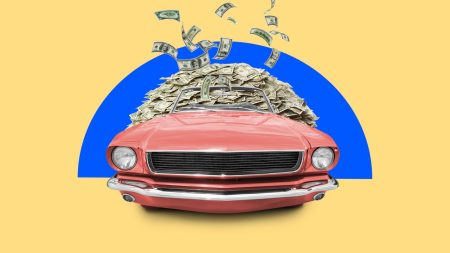Key takeaways
- To ensure that you purchase a used vehicle you can truly afford, make a budget and stick to it. Many experts advise not to spend more than 20 percent of your take-home pay on monthly vehicle costs.
- Buying a certified pre-owned (CPO) vehicle is an excellent option for those shopping at a franchise dealership.
- To secure the most competitive auto loan rate, apply for preapproval through a bank, credit union or online lender before going to the dealership.
Buying used is a great way to get behind the wheel of a vehicle for less. While used car prices have risen rapidly since 2019, the average price in January was $25,565, according to data from Kelley Blue Book. This is a 3.4 percent drop from January 2024, but the price may rise in the coming months with trade tariffs limiting the import of parts and materials.
That said, buying a used car is still far less expensive than buying new. New cars are, on average, $20,000 more expensive than used. Experian’s report for the third quarter of 2024 found that the average used car loan was $26,091. Compared to the average new car loan of $41,068 for the same period, you may be able to save significantly with a used car.
But saving money shouldn’t be the only priority on your list when considering a used versus new car. To make your purchase a sound investment, know common red flags to watch for.
6 key steps to buying a used car
There is no way to guarantee that you will get a used car free of defects. However, you can take steps to minimize your risk and secure the best deal.
1. Make a budget and stick to it
Look at your budget and determine how much you can afford to spend monthly on a car loan. Experts recommend spending no more than 10 to 15 percent of your net (or take-home) pay on your car payment.
Use an auto loan calculator before starting your vehicle search so you have a firm understanding of your budget — and the interest rate and loan terms you can afford. If you’re planning to roll tax, title and registration costs into the loan, include them in the purchase price.
And don’t forget to factor in the cost of vehicle maintenance, fuel, insurance and repairs. You may need to adjust your budget to fit it all.
Current used car rates
In general, the car loan interest rates for used vehicles tend to be more expensive than the rates you’ll be offered when purchasing a new vehicle. This is typically due to the fact that it is harder for lenders to estimate the value of a used car. In addition, the higher rate helps lenders protect themselves against a drop in the used car’s value.
2. Research cars that fit your needs
Once you have an ideal purchase price, research safe and reliable models that fit your needs and budget. Create a list of your top five options and choose a car based on reviews and safety ratings from the Insurance Institute for Highway Safety. Kelley Blue Book and Edmunds also offer reviews and ratings for used cars.
If you plan on buying a car from a franchise dealership, look at certified pre-owned options. CPO vehicles offer several advantages. Only vehicles in the best shape and condition qualify for CPO programs. They are generally under 5 years old, with low mileage and a clean vehicle history.
In addition, CPO vehicles often have a warranty from the manufacturer. You can also buy a private extended warranty if you find a perfect ride that isn’t CPO.
3. Get preapproved for financing
Before visiting the dealership or shopping for a vehicle from a private owner, consider getting an auto loan through a traditional bank, credit union or online lender.
- Banks: Many traditional banks offer auto loans, and some banks offer auto loan discounts for existing customers or discounts when you sign up for autopay. In addition, interest rates are usually less than when borrowing through a car dealer.
- Credit unions: Credit union auto loans are known for being more affordable, as they generally feature lower auto loan interest rates than traditional banks. However, you will need to become a member — generally by opening a checking or savings account — in order to qualify with most credit unions.
- Online lenders: Shopping for an auto loan from an online lending platform can make it easier to compare multiple loan offers simultaneously. The interest rates available through online lenders may also be more competitive than those available through a traditional bank, but it isn’t guaranteed.
- Dealerships: Dealer financing should be approached with caution. Some dealers may try to pair you with a lender paying a heftier commission rather than a lender with a lower interest rate. To avoid this, walking in with preapproval from another lender gives you more leverage to negotiate both the vehicle’s sale price and financing terms.
4. Shop around for a car
Start exploring options for purchasing your future set of wheels. Here are some good starting points:
- Private party sellers: Purchasing from a private owner through Craigslist or Facebook Marketplace can work if you have a specific car in mind and don’t mind vetting the vehicle and seller yourself.
- Dealerships: Shopping in person at a dealership means enjoying expert assistance. Consider exploring available vehicles online ahead of time to see if anything interests you.
- Online retailers: Shopping online with platforms such as Carvana or CarMax allows you to browse a huge selection of vehicles, but you may not be able to test drive before buying.
Keep in mind:
Proceed cautiously when purchasing from a private seller to ensure you avoid potential scams.
5. Take a test drive
Before making a decision on something as costly as a car purchase, it’s important to get behind the wheel of the vehicle and take it for a drive. Doing so allows you to get a feel for how the car handles and its overall performance. A test drive can also help assess how comfortable you are driving the vehicle and whether you enjoy driving it.
In addition to these benefits, a test drive is an opportunity to identify any potential red flags or issues with the vehicle before purchasing it. For instance, as you drive the car, listen for unusual noises and look at the dashboard to see if any orange or red indicator lights are on.
6. Fully research a car after test driving
Access the vehicle history reports for your top choices. You can visit Carfax or AutoCheck to pull this information using the VIN, or vehicle identification number, if the vehicle is from a private seller. Otherwise, the dealership should have the vehicle history readily available to review.
Consider contacting the car’s previous owner when buying a vehicle from a dealer. You can learn more about the car’s maintenance history and whether it has issues you should know about. Here are some of the best questions to ask a seller:
- Can I see the service records?
- Can I have the vehicle independently inspected?
- How many owners have the vehicle had?
- Is the title clear?
Bankrate insight
If the car does not have a clear title, it may be under a lien. The previous owner’s information can be found on the car’s title. You can also ask for the car’s VIN and use it to track down the vehicle’s previous owner through websites like Carfax, which provides vehicle ownership history reports.
7. Request a third party mechanic inspection
If you are ready to buy, ask if you can have the car independently inspected by a mechanic. Work with a person or shop you trust to avoid financing a car that won’t rack up repair costs over the long term. If there are issues, ask the seller to cover the repair costs or reduce the selling price.
You should also check for safety issues and recalls, which can be done on the National Highway Traffic Safety Administration’s website using the car’s VIN.
8. Negotiate and finalize the purchase
The final step is to seal the deal. Now that you know your budget, rates and average vehicle prices, negotiate a purchase price that works for both parties. As you’re negotiating, watch out for dealer add-ons. These are features that are designed to convince buyers to spend more than intended, such as extended warranties and tire protection. Not only will these extra items increase your out-of-pocket cost, you’ll also pay interest on them if you choose to finance them instead of paying cash.
If you’re financing the car, focus on the purchase price, not the monthly payment. This helps you avoid getting trapped in an extended loan that increases interest costs. You must also finalize the loan by contacting the lender to sign documents.
Key factors to consider when buying a used car
Test drive any vehicles that pique your interest and know what to look for when viewing a used car. Some of the top items to review include:
- The car’s body condition: Look for dents, rust and panels that don’t align properly, which may indicate poor assembly or repair work.
- Reliability: Some vehicles have better reputations than others. Check Consumer Reports for any current recalls or typical maintenance issues to ensure you aren’t purchasing a car fraught with issues.
- Suspension: Make sure the car is level.
- Lights: Inspect all the lights to ensure they work and are not cracked or foggy due to moisture.
- Safety features: Even older vehicles should have equipment to keep you safe. Look out for features like automatic braking or adaptive cruise control.
- Pedals: Look at the gas pedal, brake and clutch to ensure the rubber is not overly worn. If a car is advertised with low mileage, the rubber on these pedals should not be worn through.
What to watch out for when buying used
A used car could be right for your finances. Still, there are pitfalls to remember. Beware of:
- Cars with salvage titles, which the insurance company has declared a total loss.
- Private sellers or dealers that aren’t open to you having a pre-purchase inspection done on the vehicle.
- Private sellers who try to rush you into purchasing the vehicle.
- Vehicle history reports with limited maintenance records.
If you encounter a salvage title or limited maintenance records, ask more questions and conduct research before making a final decision. However, if a private seller or dealer does not let you conduct a pre-purchase inspection or you’re feeling rushed into a purchase, it may be best to walk away altogether.
Bottom line
Purchasing a used car can save you money. But before making such a purchase, factor insurance and maintenance into your budget and then research your car options carefully.
To get the best deal on a used car, shop around for auto loan rates and get preapproved. Also, consider trading in your current vehicle and making a larger down payment to get a more affordable monthly payment.
Most importantly, have the car inspected to ensure it’s safe and reliable before sealing the deal.
Read the full article here










